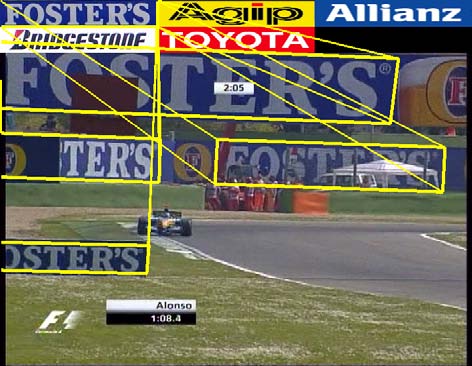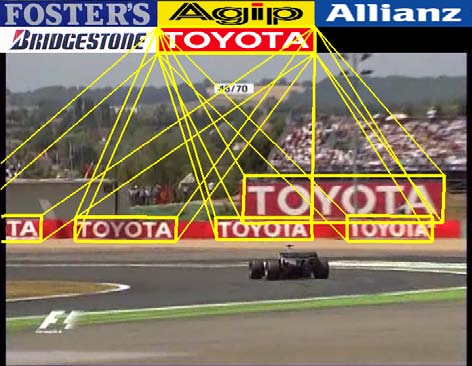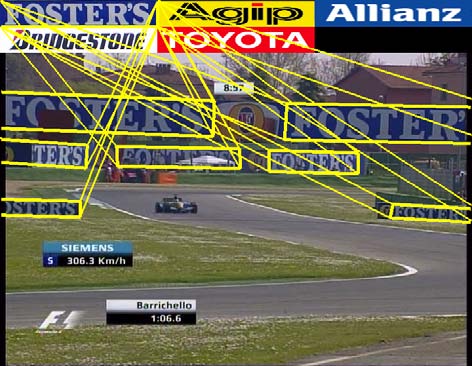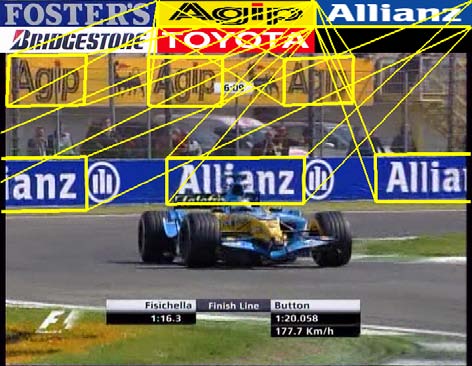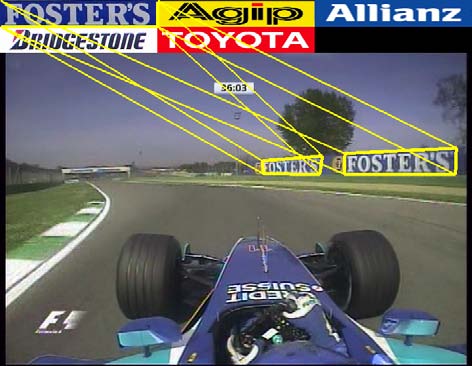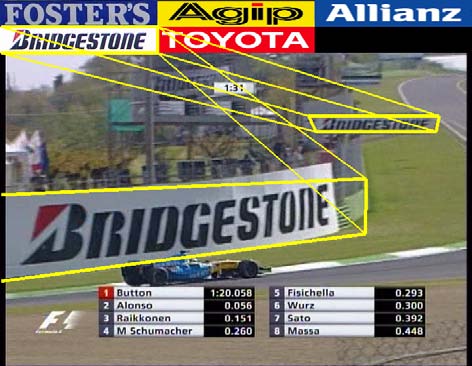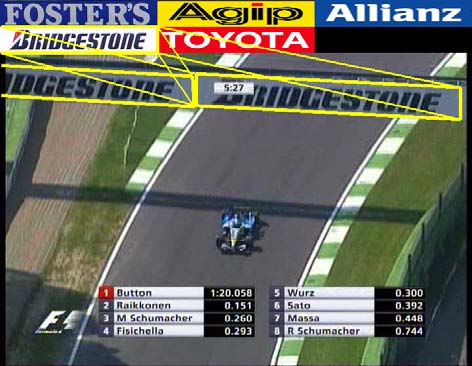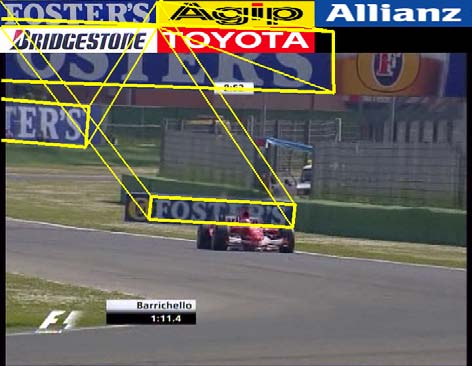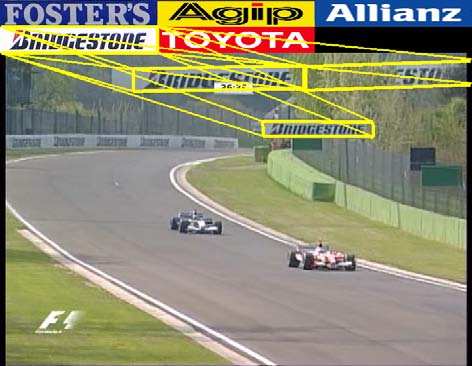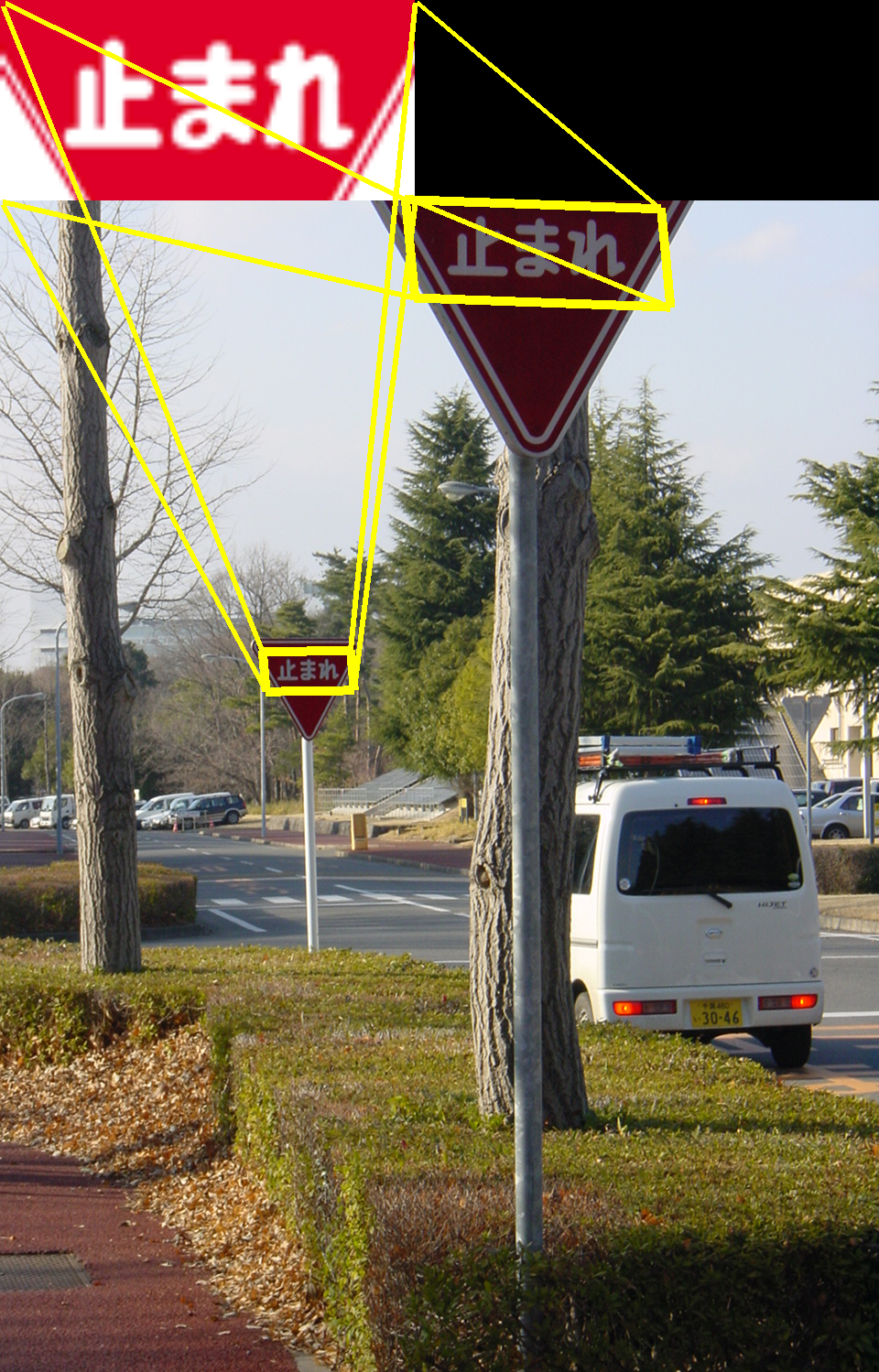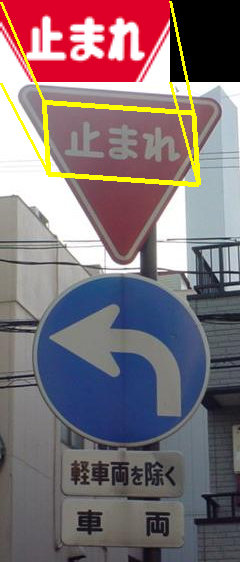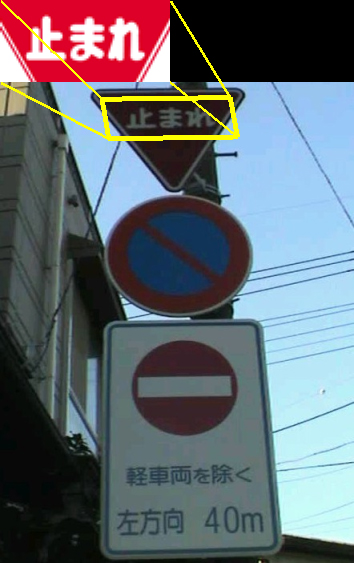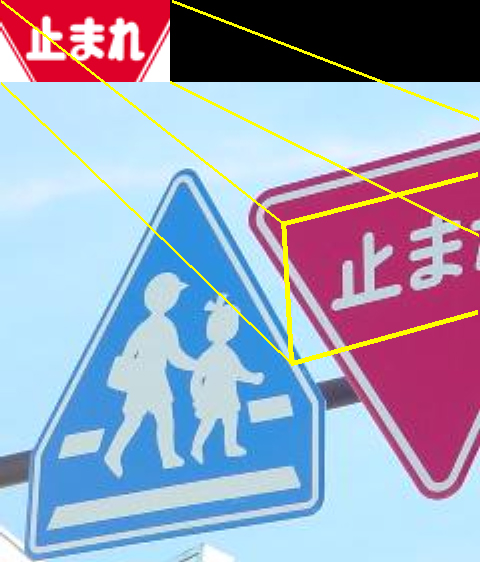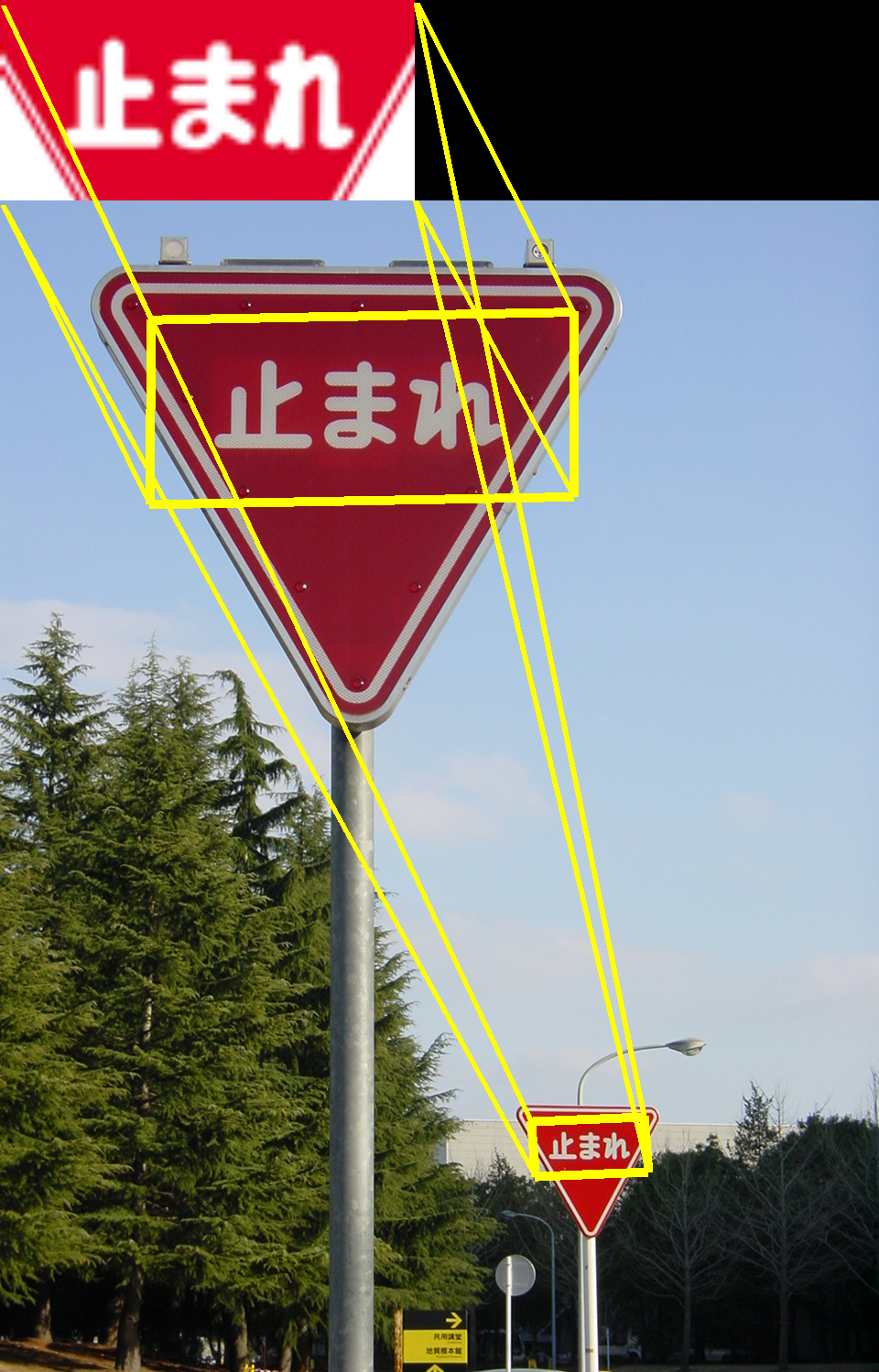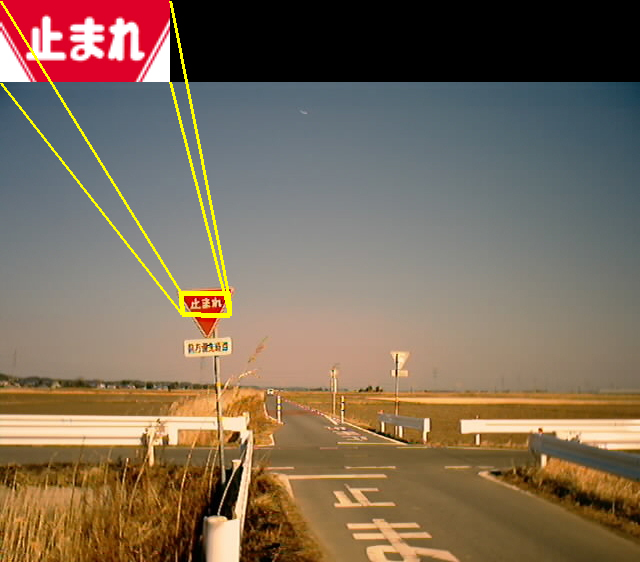![]() Recognizing Multiple Billboard Advertisements in Videos
Recognizing Multiple Billboard Advertisements in Videos
The sponsors for events such as motor sports can install billboard advertisements at event sites in return for investments. Checking how ads appear in a broadcast is important to confirm the effectiveness of investments and recognizing ads in videos is required to make the check automatic. This paper presents a method for recognizing multiple ads. After obtaining point correspondences between a model image and a scene image using local invariants features, we separate the point correspondences of an instance of an ad by calculating a homography using RANSAC. To make the use of RANSAC feasible, we develop two techniques. First, we use the ratio of distances of descriptors to reject outliers and introduce a novel scheme to set a threshold for the ratio of distances. Second, we incorporate an evaluation on appearances of ads into RANSAC to reject the homographies corresponding to appearances of ads which are never observed in actual scenes.
The following images show the recognition results for broadcasts of F1. The rectangles in the figures show the recognition results. In spite of the existence of multiple ads in these scene images, all ads were successfully recognized by separating point correspondences of each instance. These results demonstrate that our method recognizes multiple ads in various situations even if only one model image is given.
|
|
|
|
|
|
The proposed algorithm can be applied to other objects. The images below are the results of recognition of an trafic sign.
|
|
|
|
